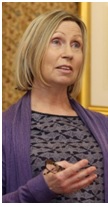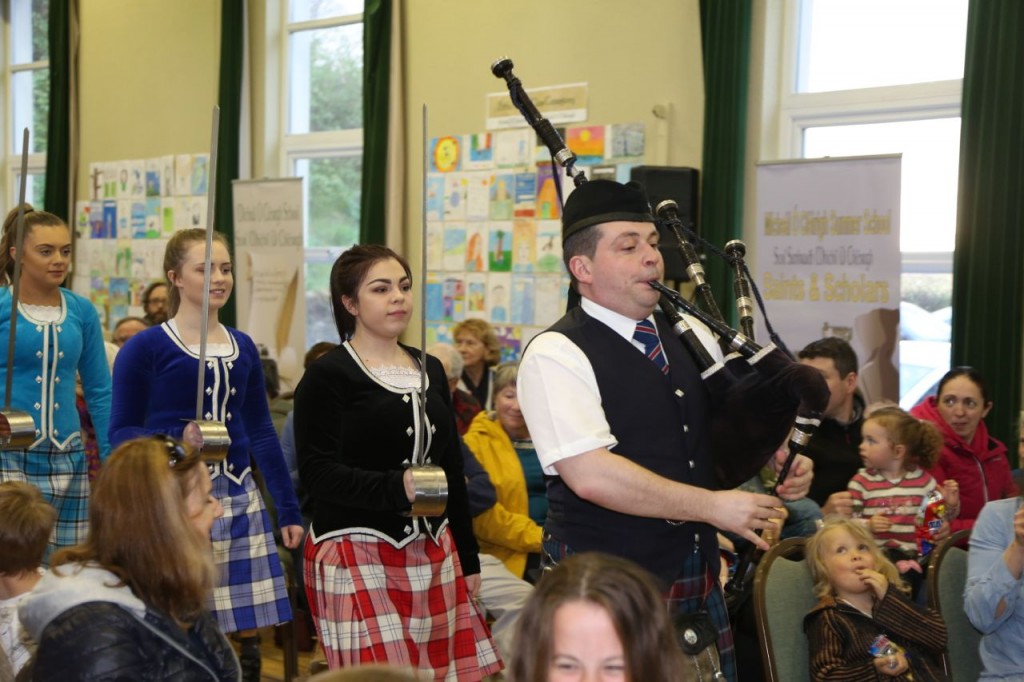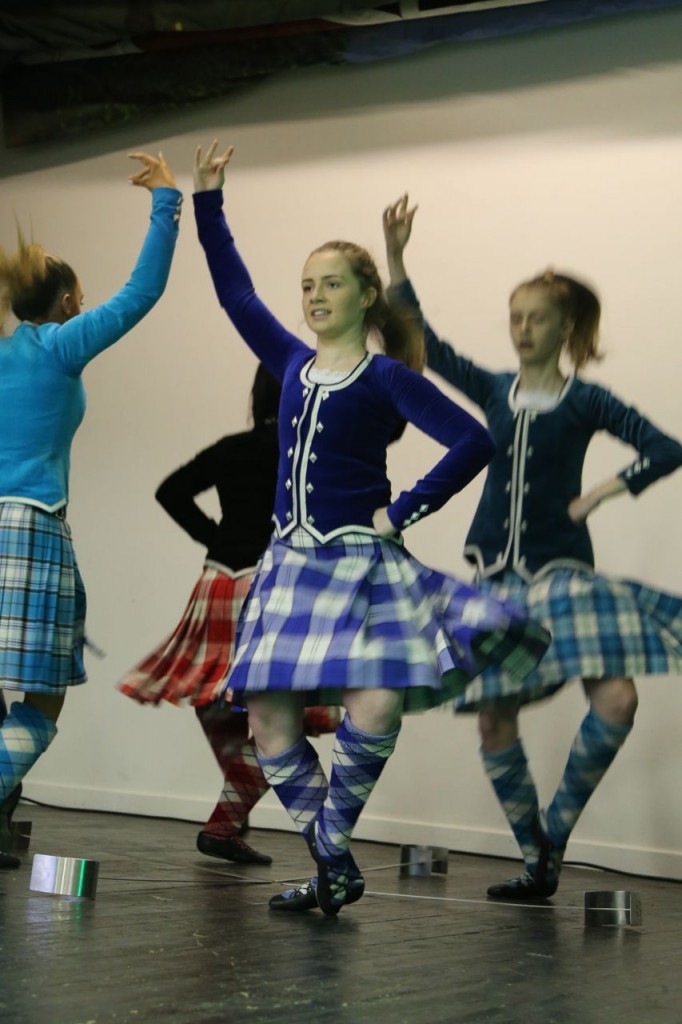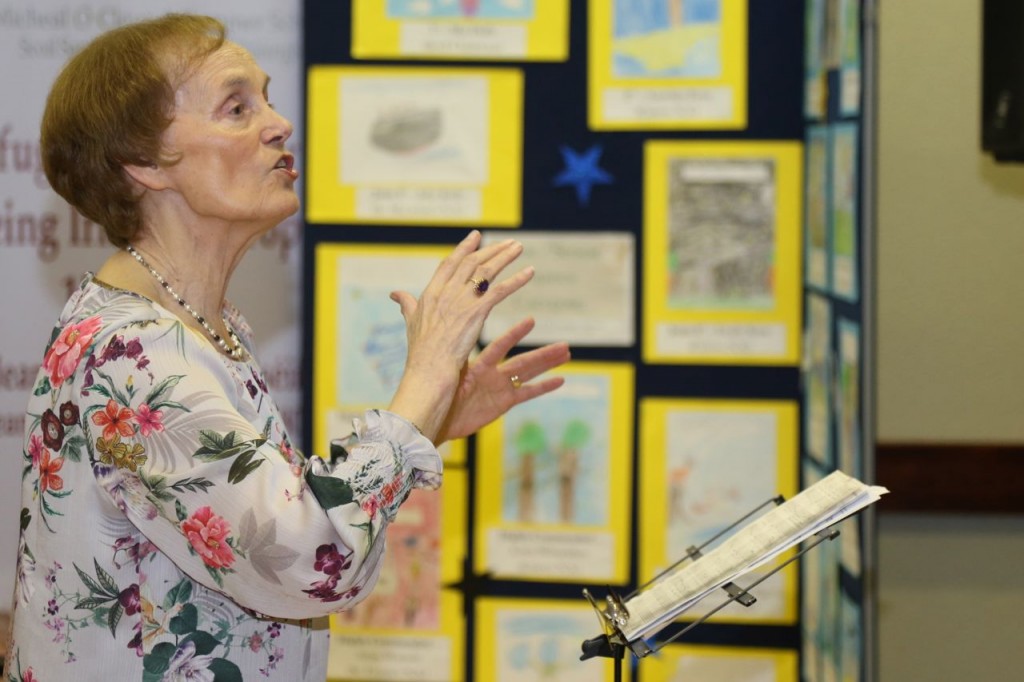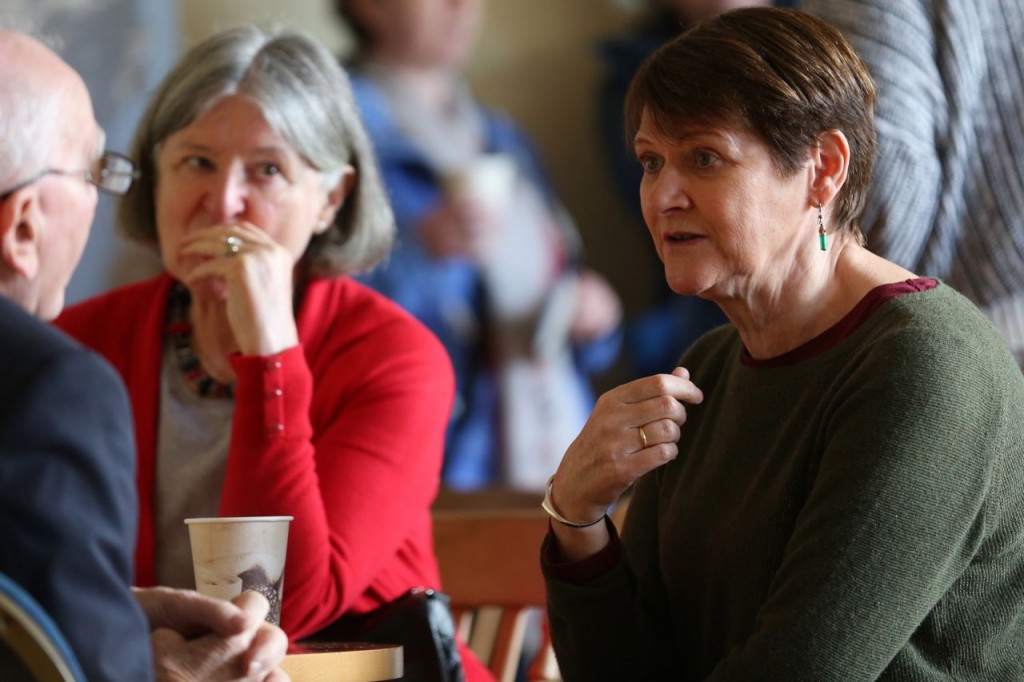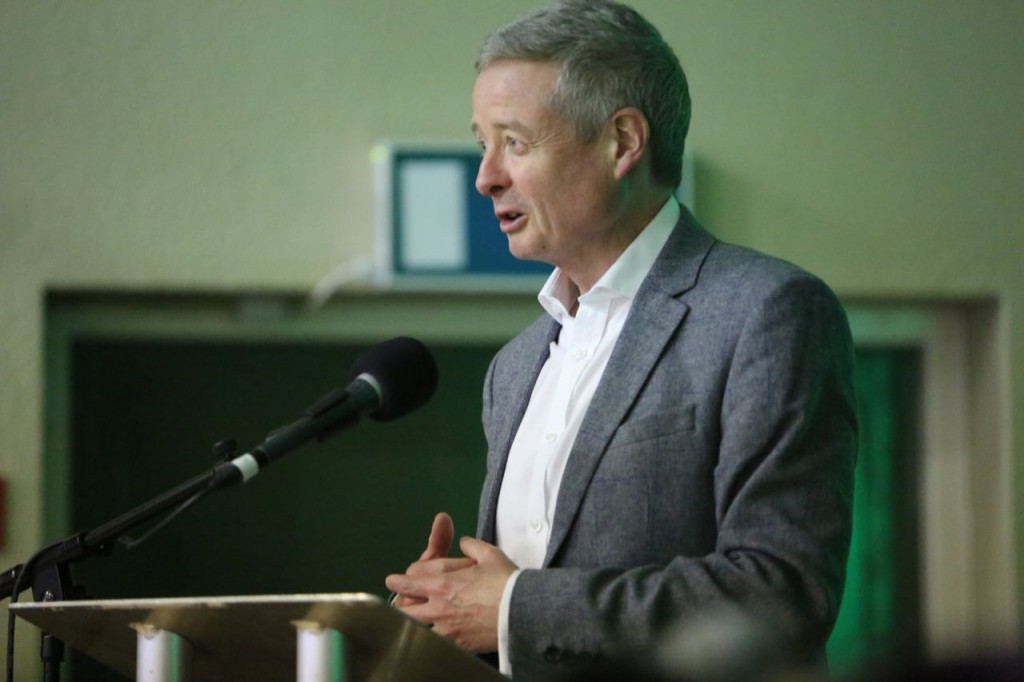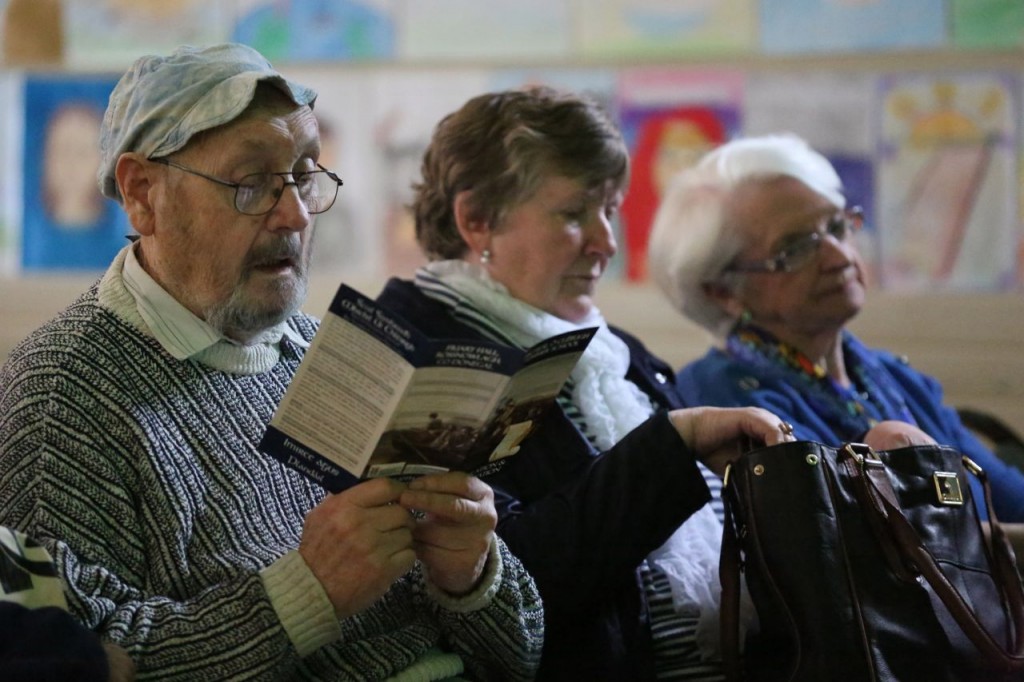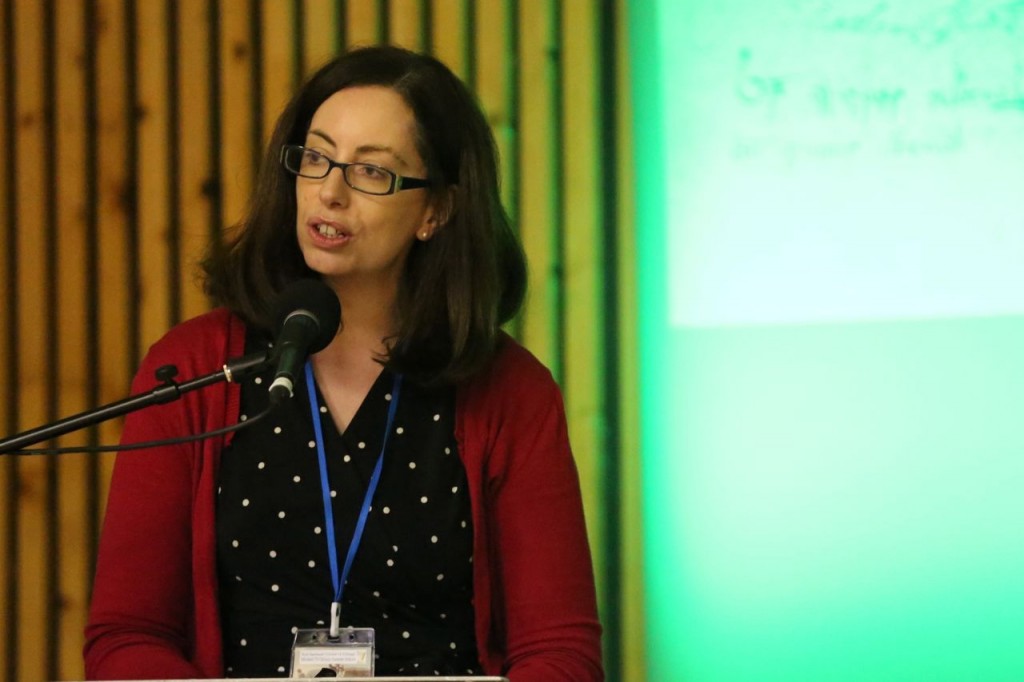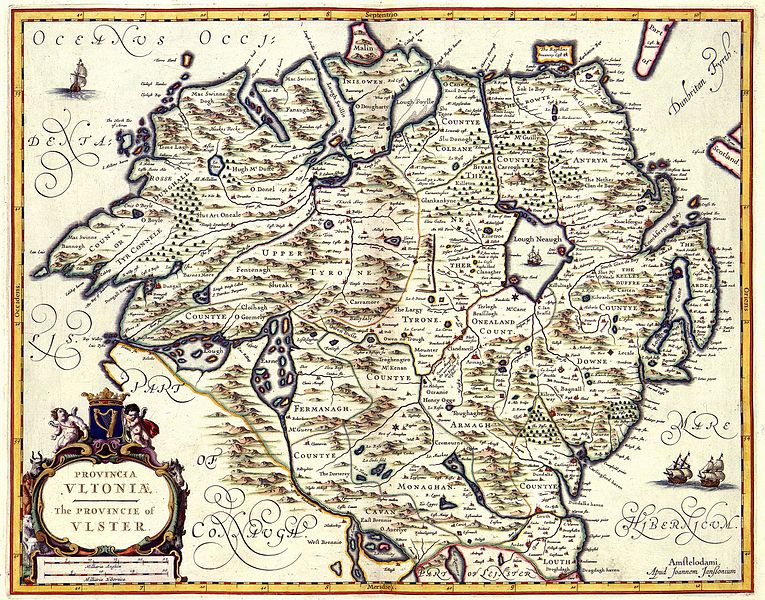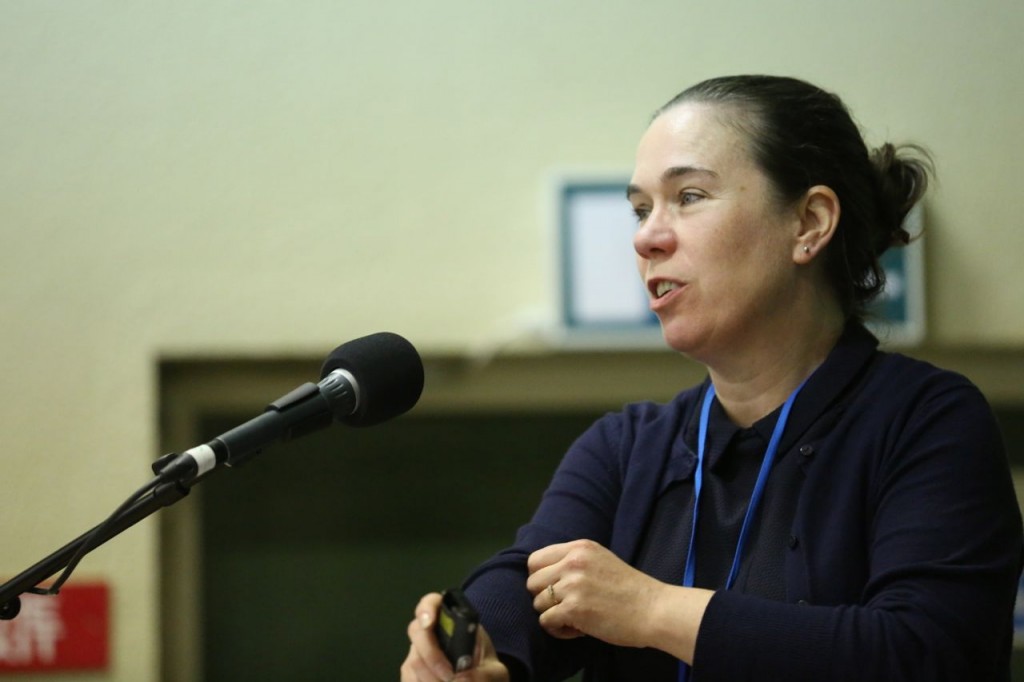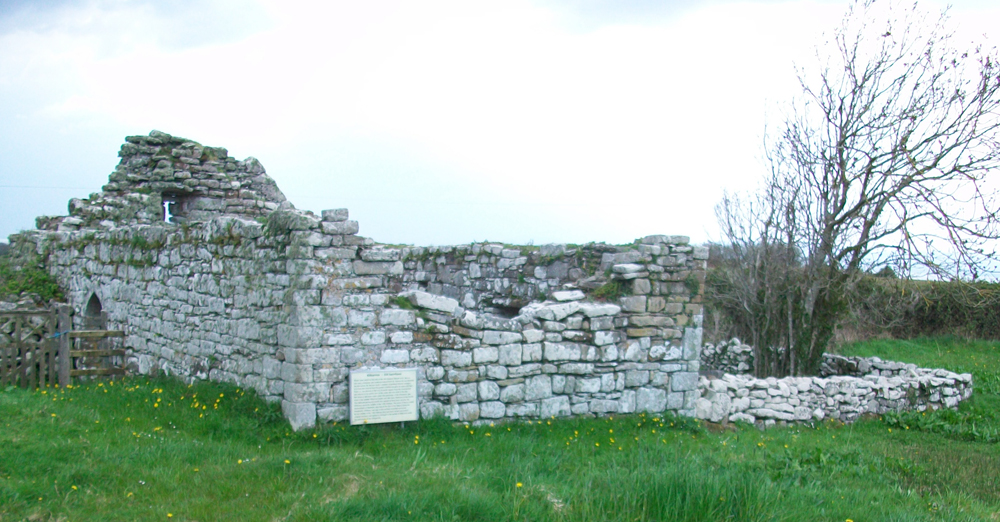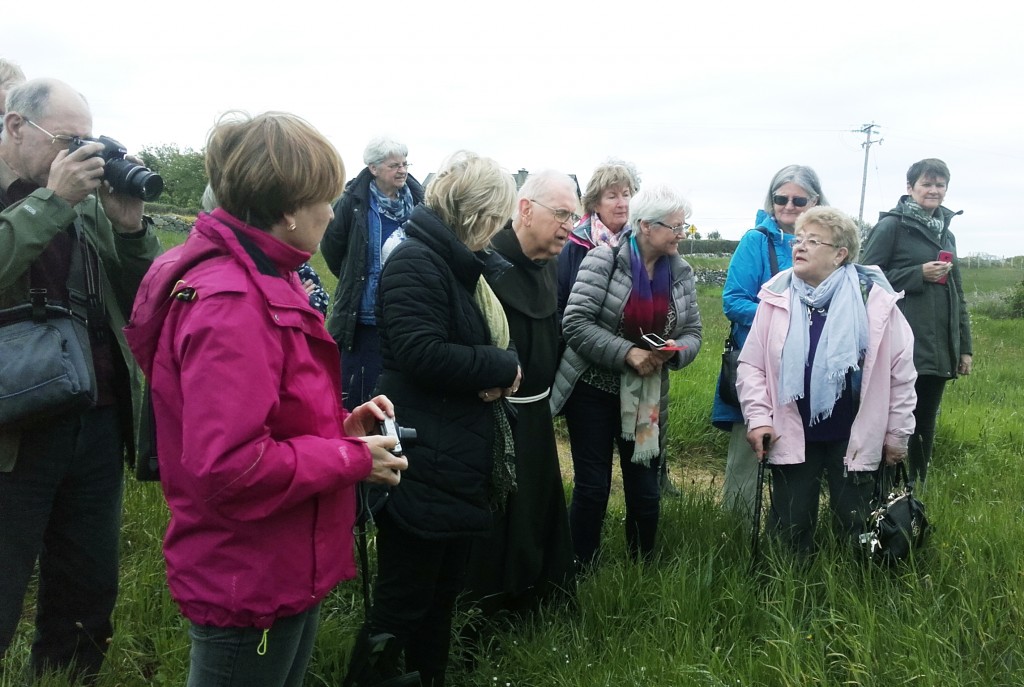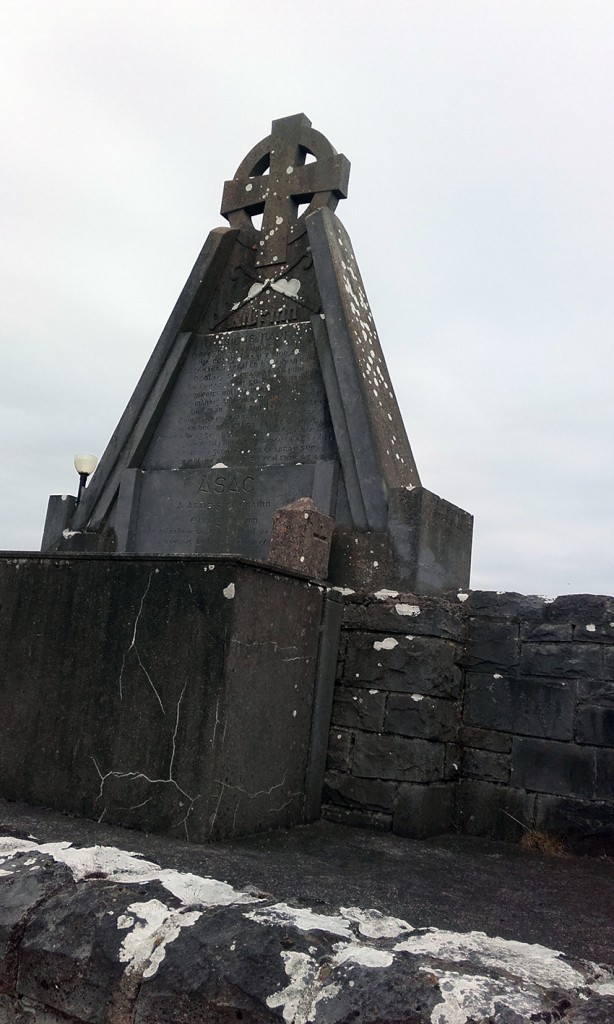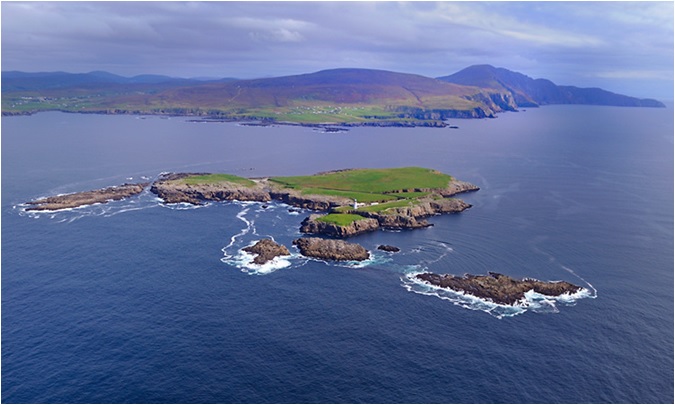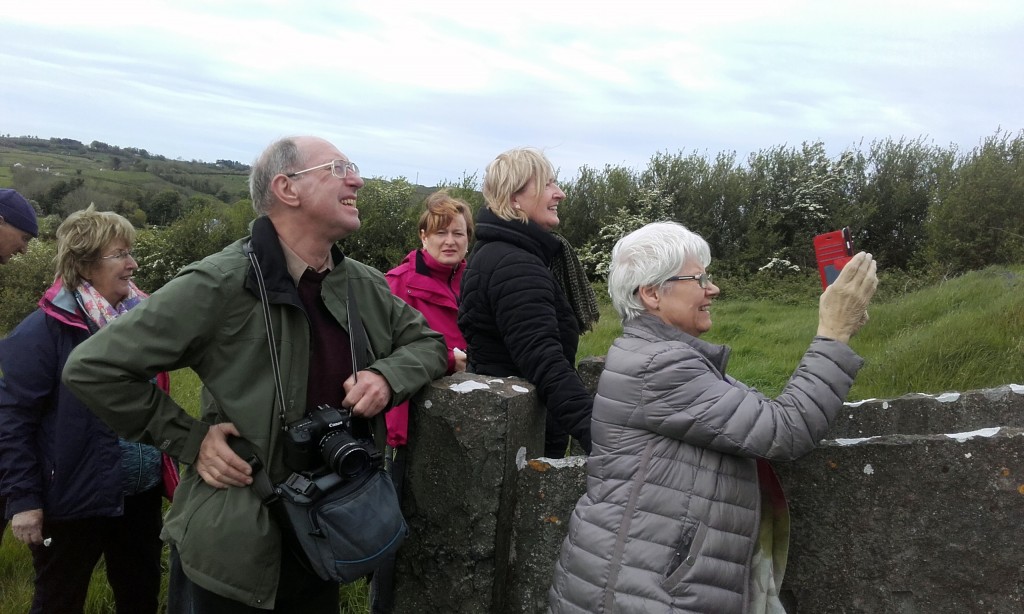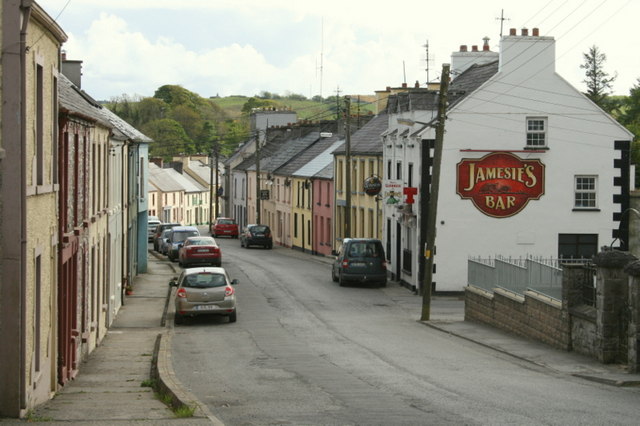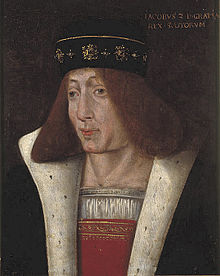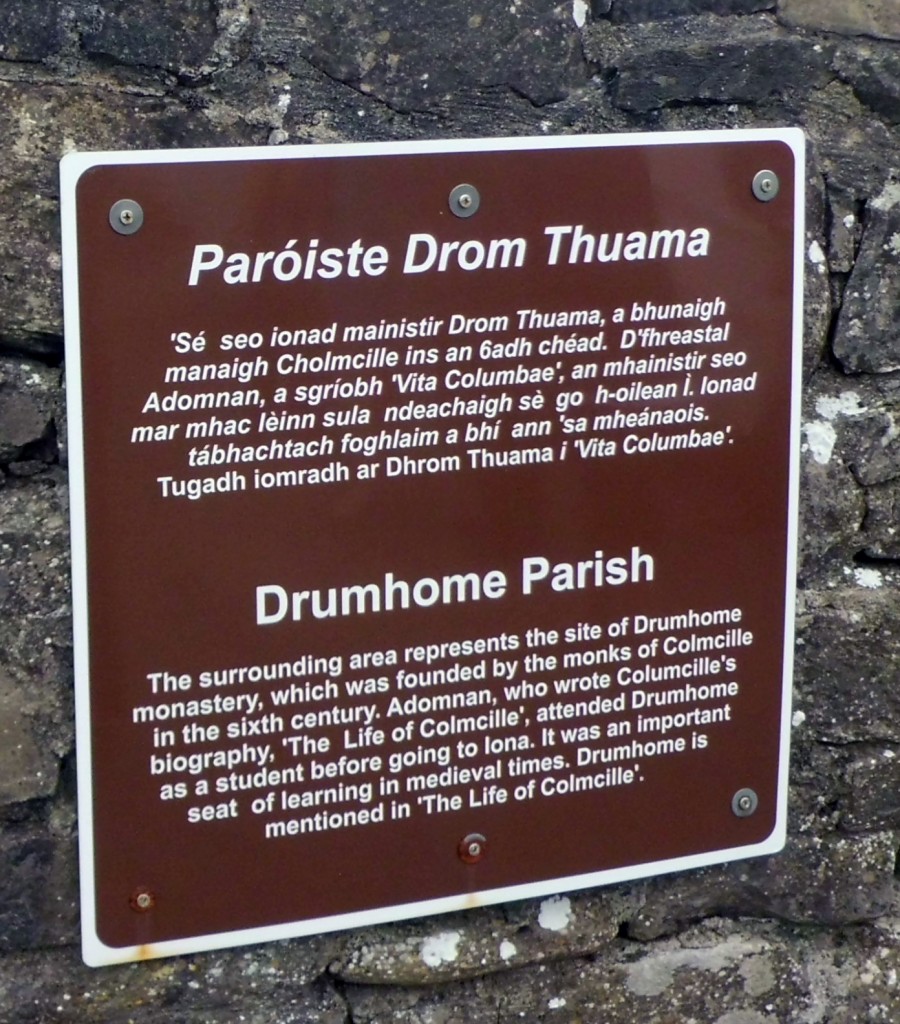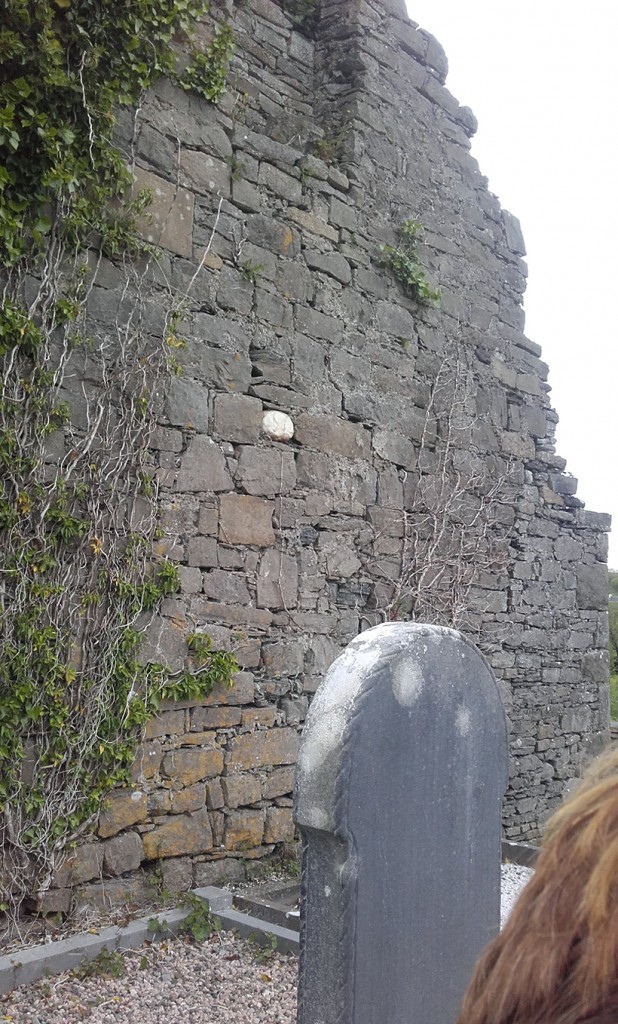2019 Summer School

The 2019 Summer School took place on the weekend of Friday 10th May until Sunday 12th May- The theme of the Summer School was “Migration and Plantation” The programme of the weekend explored the events in the first thirty years of the Plantation of Ulster from 1607 to 1637. The latter date denotes the completion of the Annals of the Four Masters
Friday 10th May
Official opening of the 2019 Mícheál Ó Cléirigh Summer School
by Linda Ervine
The Summer School was opened by Linda Ervine who spoke of her school days and the fact that she did not learn anything about the history of Ireland. She learned about British or European history but were kept oblivious of their own history even that of the Ulster Scots who came to Ulster in the 17th Century. Linda told of her fascination with the origins of place names in her native Belfast which led her to becoming interested in the Irish language. She can now converse in the language and has recently passed her GCSE in Irish.
Linda Ervine is the Irish Language Development Officer for East Belfast based at the Skainos Centre. Until eight years ago, when she started learning Irish as part of a cross-community project with women from the nearby nationalist Short Strand, Linda didn’t know a word of the language. Now she manages an Irish language project which provides 14 classes of various ability levels per week to over 250 language learners, as well as tin whistle and set dancing classes, children’s Irish dancing and monthly historical bus tours.
Local Interest Events
Primary School Art Competition – Prizegiving
The theme for the 2019 Art Competition was ‘Ireland Comings and Goings’ The many awards in the four sections of the Primary Schools Art Competition followed and this year we had the largest number of schools participating with a record number of entries. These included: Scoil Chaitríona, Ballyshannon, Four Masters School, Kinlough; Rockfield School, Ballyshannon; Mícheál Ó Cléirigh School, Creevy; Robertson School, Ballintra; Gaelscoil Eirne, Ballyshannon; St Eunan’s, Laghey; Kilbarron School, Ballyshannon; Holy Family School, Carrickboy, Ballyshannon; St John the Baptist School, Roscor, Belleek and St Macartan’s School, Bundoran.



Sollus School of Highland Dance
Led by piper Darren Milligan, the dancers from the Sollus Highland Dance School Bready Co Tyrone gave a wonderful and entertaining display of Scottish Highland music and dance. Here are some pictures of the group. The school of dancing, based in Bready, Co Tyrone was formed in 2001. Mischa Dodds (Edinburgh) helped to build up the dance team and trained up the now tutor Georgina Kee-McCarter. The group in their short history have recorded phenomenal success in the competition arena, the highlight being crowned European & Ulster Choreography Champions. Performing in showcases & festivals has seen some of the dancers travel right across Europe to places such as Holland, Switzerland, Germany, France, Belgium plus numerous events in Britain including Windsor Castle for the Royal Family. Sollus Highland Dancers currently have now 5 qualified tutors and teach almost 600 young people weekly in local schools and community groups.
Cór Craobhaigh- A musical Performance
Cór Craobhaigh the junior choir formed by Angela Currid back in 1987 has performed at the Mícheál Ó Cléirigh Summer School many times since the Summer School was started in 2014.
Cór Craobhaigh has been performing locally and nationally for thirty years. The group has provided hundreds of local children with an introduction to music and contributes hugely to the musical fabric of the locality.

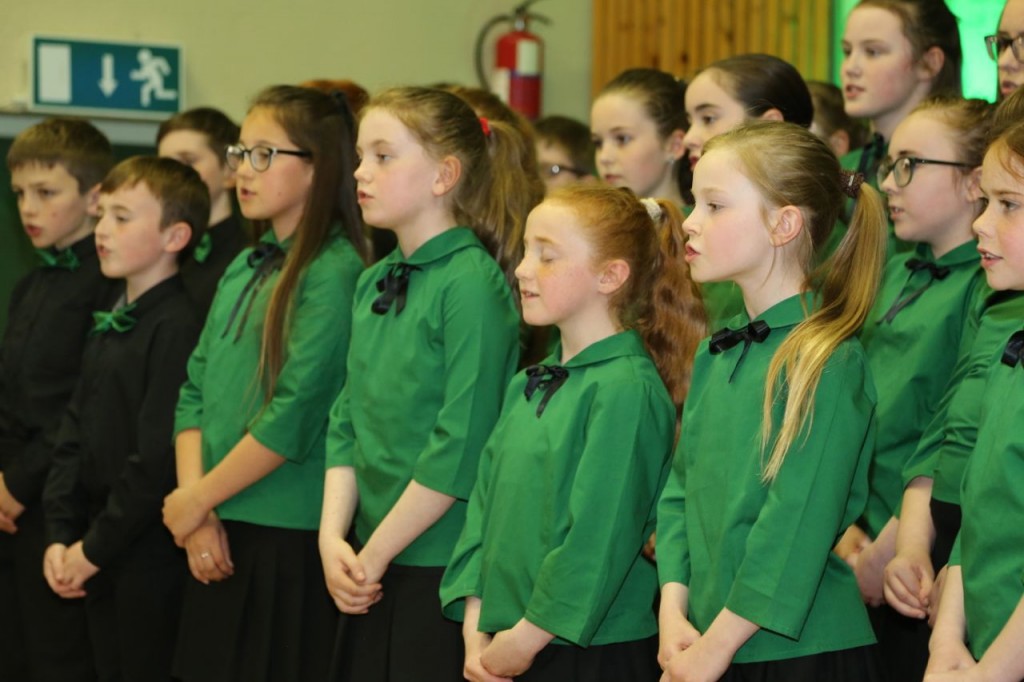
Saturday 11th May- morning session
Local History Events
British migration into west Ulster in the 17th Century
by Dr Paddy Fitzgerald
Dr. Patrick Fitzgerald spoke about the pattern of migration from England Scotland and Wales to the west of Ulster in the early years of the Plantation. This was a pet project of King James I and he was anxious to know how it was progressing and as a result there is a lot of documentary evidence of its progress or lack of progress. The latter was well documented by Sir Thomas Phillips who felt aggrieved by having to give up some of his grants to the London Companies in the new county of Londonderry created by detaching the commercially valuable Glenconkeyne woodland in the barony of Loughinsholin, from Tyrone and adding it to the former County of Coleraine making the new county.
Paddy Fitzgerald was educated at Queen’s University Belfast. A former curator at the Ulster-American Folk Park he has been teaching a QUB Masters in Irish Migration Studies since 1996.He has published works including: (with Brian Lambkin), Migration in Irish History, 1607-2007 ‘‘Irish Return Migration from the United States in the nineteenth and twentieth centuries and ’‘Scottish Migration to Ireland in the Seventeenth Century’
Irish History, 1607-2007 ‘‘Irish Return Migration from the United States in the nineteenth and twentieth centuries and ’‘Scottish Migration to Ireland in the Seventeenth Century’
East Donegal- a story of Migration and Emigration
by Belinda Mahaffy
Belinda Mahaffy is a retired librarian with a keen interest in local history particularly of the Ulster Scots influence in the period of the 17th and 18th Centuries. A member of Donegal Historic Society, she has served as an executive member of the Federation for Ulster local studies. Belinda will talk about the experiences of those families who arrived in Donegal at the outset of the Plantation and how many later left Ireland for the American colonies where they were to have a major influence in the subsequent events there.
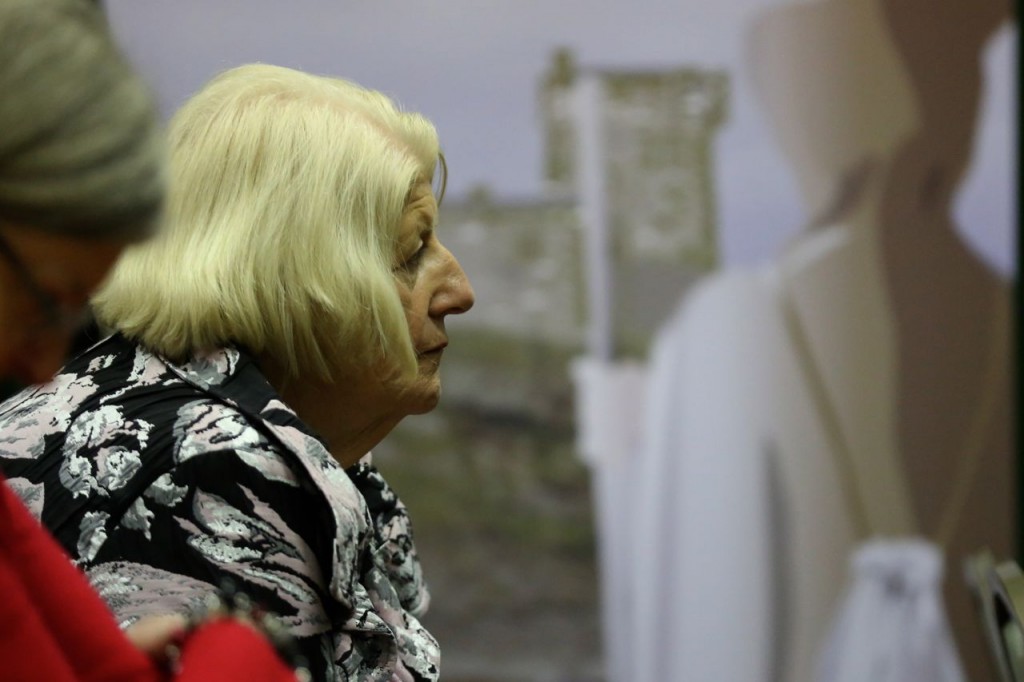
Summer School Events
Introduction to the Saturday History Talks
by Professor John McCafferty
Director of the Mícheál Ó Cléirigh Institute UCD
Professor John McCafferty set the context for the 2019 Summer School reminding those attending that history is not always truthful and is told in people’s own experiences that can become embellished over a period of years. Historians must as a result of this examine events from various perspectives to find a fair interpretation but this too can be clouded by the historians own perspectives. Aspects of the period of the first thirty years of the Ulster Plantation were to be examined in the three talks in the afternoon.
John McCafferty is the Director of the Mícheál Ó Cléirigh Institute, a partnership between University College Dublin and the Irish Franciscans. He holds a PhD in history from Cambridge University and has taught in UCD, where he took his first two degrees since 1994. He has published on the histories of both Protestant and Catholic Churches in early modern Ireland. He has contributed talks to this Summer School every year since its inception in 2014 and gives valuable help and advice to the organising committee in planning the weekend’s historical context and speakers each year.
Music of the Plantation
by Dr Kerry Houston, PhD MA LRSM
Head of the Department of Academic Studies at the DIT Conservatory of Music and Drama.
Kerry’s research interests focus on source stuydies and especially those of sacred music Ireland 1660–1900 . In addition to the publications detailed here, future projects include the preparation of a complete critical edition of the sacred music of Daniel, Thomas and Ralph Roseingrave and a catalogue of music manuscripts at Saint Patrick’s and Christ Church Cathedrals. Other research interests include editing and stemmatic analysis; harmonic theory and reception history with particular interest in Mendelssohn; theology and number symbolism in music. Kerry is the Chairman of RILM Ireland; a founder member of the RISM Ireland Steering Committee; honorary treasurer of the Irish Society for Archives; and honorary treasurer for the Dublin University Far Eastern Mission. Kerry was a contributor and co editor (with Barra Boydell), Ireland, Music and the Seventeenth Century, Irish Musical Studies, Vol. 10 (Dublin: Four Courts Press, 2009)
Visualising the Plantation: Surveys and Maps of Ulster 1580-1640
by Annaleigh Margey DIT Dundalk
Annaleigh Margey is a Lecturer in History at Dundalk Institute of Technology. Originally from Letterkenny, she studied for her BA and PhD at NUI, Galway. Her PhD research titled ‘Mapping during the Irish Plantations, 1550-1636’, focused on the surveys and maps created in Ireland during the decades of plantation. She subsequently held an Irish Research Council Postdoctoral Fellowship and a J.B. Harley Fellowship in the History of Cartography to continue this research at Trinity College Dublin. More recently, Annaleigh has worked as a Research Fellow at the University of Aberdeen on ‘The 1641 Depositions Project’ and at the Institute of Historical Research, London, conducting research on the property and charity of the Clothworkers’ Company in early modern London. She has also worked as a Research Fellow on a joint project with NUI, Maynooth and the National Library of Ireland focusing on the rentals and maps in the landed estates’ collections in the library’s holdings. She has published books and articles on early modern Ireland, including an edited volume, The 1641 Depositions and the Irish Rebellion, with her colleagues Elaine Murphy and Eamon Darcy. Her book Mapping Ireland, c.1550-1636: a catalogue of the manuscript maps of Ireland will be published by the Irish Manuscripts Commission in late 2018. Most recently, she has been a contributor to The Cambridge History of Ireland, vol. II and has worked on a cross-border project with Armagh Robinson Library and Marsh’s Library, Dublin to digitise, and exhibit, the map holdings of the two eighteenth-century libraries.
Joan Blaeu
Map making was the new science of the late middle ages. Dutch mapmaker, Joan Blaeu followed his father William Blaeu as a cartographer and published this map of Ulster. It is a hand-coloured, engraved map of ‘Vultonia; Hibernis Cujgujlly; Anglis Vlster.. Blaeu’s world map, Nova et Accuratissima Terrarum Orbis Tabula, incorporating the discoveries of Abel Tasman, was published in 1648. This map was revolutionary in that it “depicts the solar system according to the heliocentric theories of Nicolaus Copernicus, which show the earth revolving around the sun..
John Speed
John Speed printed this map of Ulster in 1611.On the reverse of the map there is a complete set of text briefly describing the history and topography of the province.
Keynote Address
“I praye God ye may make us all merye”:
Migrating Women and the Ulster Plantation
by Professor Anne Louise Coolahan NUI Galway
The keynote address by Marie-Louise Coolahan concentrated on the letters from Susan Montgomery, wife of Bishop George Montgomery who had been granted the Bishoprics of Derry Raphoe and Clogher by King James I in 1605.
Susan wrote extensively to her sister Margaret and brother-in-law George Willoughby. The correspondence is important as it gives an impression of what life was like for a woman who was used to the finer things of 1th Century England coming to a relative wilderness in north-west Ulster.
Anne Louise Coolahan is a graduate of Trinity College Dublin (BA 1994), Oxford University (MPhil 1996), and Nottingham Trent University (PhD 2000). In 1996 she was awarded a doctoral bursary to work with the AHRB-funded Perdita Project, which was founded to research sixteenth- and seventeenth-century women’s manuscript compilations, and to produce a searchable electronic database comprising bibliographical descriptions and detailed analyses of approximately 400 manuscripts. Her doctoral thesis, ’Gender and Occasional Poetry in Seventeenth-Century Manuscript Culture’, was completed in 2000, since which time she has been a member of the English Department at NUI, Galway. She was a visiting research fellow at the Institute of English Studies, University of London, 2004-5 and a Government of Ireland Research Fellow, funded by the IRCHSS, 2006-7. Marie-Louise was awarded a research fellowship at the Folger Shakespeare Library, Washington D.C., and elected a Fellow of the Royal Historical Society (UK) in 2012.Most recently, Marie-Louise has been awarded a European Research Council Consolidator Grant (Principal Investigator) for her project, RECIRC: The Reception and Circulation of Early Modern Women’s Writing, 1550-1700. This project, which will run from July 2014 to June 2019, will produce a new, large-scale understanding of how women’s writing circulated, using the results to analyse how texts, ideas and reputations gained traction in the early modern English-speaking world. It will focus specifically on international correspondence networks, transnational religious orders, and the manuscript miscellany as a mode of textual transmission.
Sunday 12th May
Summer School Tour –
Kilbarron Old Church, Rathcunga, Ballintra, Bridgetown, Laghey & Abbey Mill
Kilbarron Old Church
Each year there is a bus trip around local historic sites. This year the tour visited the historic 15th Century ruins of Kilbarron Church situated in just off the main Ballyshannon to Rossnowlagh road. It gives its name to both the civil and ecclesiastic parish of Kilbarron. “Cill Barrainn”, the Church of BarrainThe name Kilbarron is an Anglicisation of the Irish Chill Barrfionn meaning the church of Barron. St Barrfionn is listed in the “Felire na Naomh na hEreannach” compiled by Mícheál Uí Cléirigh and his scribal team in the 1620s. They write that “ Church
“Bairrfionn, bishop, of Druim Cuillin and of Cill bairrfinn to the north of Eas Ruaidh. He is of the race of Conall Gulban son of Niall& C. Didhnat daughter of Meachar was his mother”.
Barrfionn Saint’s Day is given as the 21st May and was a contemporary of St Columcille- some suggest his teacher and of the same Cinéal Connaill tribe. Druim Cuillin is situated in County Offaly where Barrfionn also founded a church.
Whilst St Columcille left Ireland after the Battle of Cul Dreimhne, (at the foot of Ben Bulbin in Co Sligo) exiling himself to Iona in penance to atone for the loss of life over his dispute with St Finian over a book of Psalms which he had copied without the permission of its owner, St Barrfionn remained in Ireland but may have travelled southwards to Cork where controversially it is believed that he is in fact the same person as St Finbarr!
Cill barrainn church would have been a wooden structure originally but was replaced by a stone building in the 14th Century by the Uí Cléirighs, whom in addition to being the Ollamhs to the ruling Uí Domhnaills, were Erenachts to the Cistercian Abbey lands of the parish of Kilbarron. In addition to this they provided the clergy to the parish church of Cill Barrainn and members of the Uí Cléirigh clan served as rectors of the parish almost continuously up until the demise of the Uí Domhnaills in the early 17th Century and when the Abbey was dissolved circa 1605.The last O’Clery Catholic Rector of the parish was one James O’Clery in 1688.
The church then became the Established parish church until the first St Anne’s church was built on Mullinashee hill at the edge of the newly created Borough town of Ballyshannon in the 1620s, whence after the old church gradually fell into ruin.
The area surrounding the Church ruins were used up until recent times as a burial place for unbaptised babies. In 2015 a memorial stone was unveiled to commemorate this fact.
Rathcunga
Racoo Monument was built in 1957 to mark the site of the ancient church and monastic settlement called Rathcunga where St Assicus or Naomh Tassac is buried. In the Triparte of St Patrick, written by Tirecháin, who wrote this some hundred years after the death of St Patrick, it is written that:
Bishop St. Assic was Patrick’s coppersmith and made altars, tables, and square bookcases. Besides, he made our saint’s patens in honour of Bishop Patrick, and of them I have seen three square patens, that is, a paten in the Church of Patrick in Armagh, and another in the Church of Elphin, and a third in the great-church of Donough-patrick (at Carns near Tulsk in Co Roscommon). Now at sometime afterwards he was party to a lie and as penance he removed himself from the relative comfort of Elphin he made his way to west Tír Connaill to the land around Slieve League and to the island of Rathlin O’Birne remaining there for seven years. The monks of the monastery at Elphin decided to find St Assicus with the hope of persuading him to return to Elphin. When they found him on Rathlin O’Birne they had great difficulty trying to get him to give up his solitary life. Eventually he agreed to return but took ill on the journey back and was buried at the monastery of Rath Cunga. His death is believed to have happened in 490AD.
Rath Cunga, now better known as Racoo Hill is situated on a steep hill in the townland of Ballymacgroarty. As the name suggests it was originally a Rath in a rectangular form probably due to the shape of the drumlin (Ulster Journal of Archaeology Volume 43 1980) the site was obviously chosen for its commanding wide vista of the surrounding area. North of the Rath river was held by a obscure group called the Lathrú the area called Mag Latrain.
The southernmost part of Tír Áeda was known as “Mag Sereth” in ancient times and part of the territory of the Cinéal Cairpe up as far a Rath Cunga. In (C)638 Domnall Mac Aedo, King of the Cinéal Conaill seized the nearby fortress of Árd Fothruid (Glasbolie) from the Cinéal Cairpe thus extending the territory of the Cinéal Connaill southwards to the River Erne. The area south of the Rath River became the territory of the Uí Maoil Doraidh (O’Muldory) and they and the Uí Cannanns (O’Cannon) whose territory extended north of the Rath River alternated the right of being king although not always amicably.
The monastery at Rath Cunga probably became largely supplanted by the emergence of the monastery at Droim Thuma, Drumholm founded by St Adhamháin, Eunan or Ernan and supported by the Uí Maoil Doraigh. In fact the last Uí Muldoraigh king of Tír Connaill, Flahertaigh, was buried there in 1197.
Afterwards the tour went through the villages of Ballintra, Bridgetown and Laghey.
Ballintra
The village of Ballintra ,Baile an tSratha the homestead of the grove, was developed by the Hamilton’s of Brownhall. Their original residence was at Murvagh on lands they leased from Trinity College. The college was a large beneficiary of the plantation getting estates in each county and parish. They were given extensive grants in the parish of Drumholm. Henry Ffolliott. created Lord Ballyshannon in 1619 who owned most of the parish of Kilbarron was also given grants of land at Ballindermot and Ballynacarrick.
The Hamiltons came to Donegal in the 17th Century and are descended from Gilbert Hambeldone. The first Lord Hamilton was a son of Mary, the daughter of James II of Scotland (1430-1460)
As landlords, the Hamilton’s had a very good reputation, John Hamilton was the owner of the estate during the Great Famine (1847-1849) and he deferred rents and set up food kitchens. Years later in 1882 he built a new home on an island on Donegal Bay calling it St Ernan’s. When he found that there was difficulty getting to and from the island he decided to build a causeway. The tenants came and built the causeway giving their labour voluntarily There is a plaque on the causeway reading:
This causeway stands to commemorate the great mutual love between John Hamilton and the people of Donegal both his tenants and others, through a bitter time of famine and pestilence’………
(Extract from Donegal South of the Gap by Liam Ronayne)
The group travelled onwards through the village which at the time that Samuel Lewis published his Topographical Dictionary of Ireland in 1837, could boast that it held seven fairs annually and had a population of over 439 people see https://www.libraryireland.com/topog/
Notable buildings are the Methodist Church. This building was built to designs by William Fawcett Gilchrist (c. 1863 – 1907/8), a Sligo-based architect. The present building replaced an earlier Methodist church/chapel (c. 1860) at Ballintra, which was located a short distance to the north-west of the present site, which in turn replaced an earlier building of this type in the town (location not known but in existence in 1837).
See:http://www.buildingsofireland.ie/niah/search.jsp?type=record&county=DG®no=40849007
Further down the Main street is Drumholm Parish Church built in 1795. Beside it is the Robertson Primary School Further out of the village on the old main road is St Brigid’s Catholic Church which was completed in 1845 replacing a wooden structure on the same site.
Coxtown Manor built by Alexander Hamilton in the early 1840s. He was the land agent for the Hamiltons of Brownhall and also acted as land agent for the nearby Conolly estate (Thomas(Speaker) Conolly bought the Ffolliott estate in 1718) He was responsible for the replacement of the old ‘Rundale’ system of land holdings in the south Donegal area in the 1830s replacing it with the enclosed field system and farms set out in co-extensive holdings.
Travelling onwards through Bridgetown which it is hard to believe was once a thriving area of industry with several grain mills sited along the Rath River harnessing its power to turn the mill wheels and grindstones.
Laghey
The village of Laghey An Lathaigh –meaning mud or a muddy place, probably referring to the crossing on the river, is not mentioned in Lewis’s Topographical Dictionary of Ireland and the village grew up along the crossing point where the seven arches bridge stands The Church of Ireland church in the village was originally a chapel of Ease for Drumholm parish and was built in 1834 and altered in 1911 , 1915 and more recently in 1999.
Drumholm church and graveyard
The wider area around Drumholm Church was an ancient monastic site and is the burial place for Flaghertaigh Uí Maoil Doraidh King of the Cinéal Connaill and who reputedly founded the Cistercian Monastery at Assaroe near Ballyshannon in 1197.
St Adhamháin born in AD 630 may have been a native of the area but many scholars now believe that he studied at the monastery. He later succeeded St Columchille as abbot of the monastery on Iona.
Drumholm gives its name to a townland and to the parish. The name in Irish is Droim Thuama meaning the hill of the tomb. The monastery flourished for many centuries and recent archaeology has revealed that the monastic site covered a much larger area than the current churchyard and ruins would suggest.
The church later became the parish church for the Established Anglican Church in the early 17th Century but fell into ruin after the present parish church was build in Ballintra in 1795.
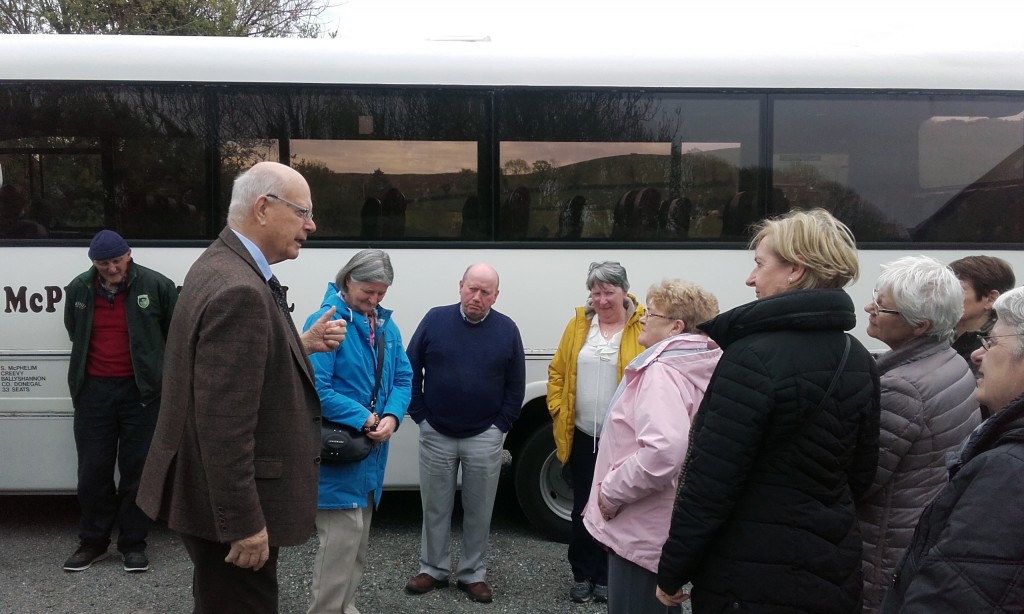
Abbey Mill
The tour ended with a visit to the Abbey Mill where a light lunch of Tea, Coffee and sandwiches was prepared for all.
